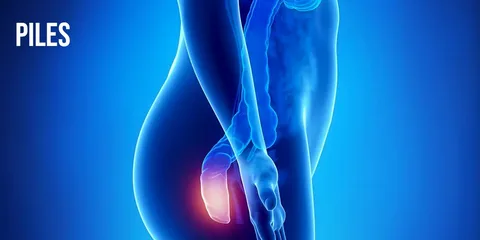Common causes and Risk factors of Piles
Piles, also known as hemorrhoids, are swollen veins in the anus and lower rectum. They can be either internal or external, and they may cause discomfort, itching, bleeding, and pain during bowel movements. Internal piles occur within the rectum and are usually painless but may cause bleeding during bowel movements. External piles, on the other hand, are located around the anus and can be painful and itchy, especially if they become thrombosed or filled with blood.
Causes of Piles:
There are several factors that can cause piles, including:
- Straining during bowel movements: One of the most common causes of piles is straining during bowel movements. This can occur due to constipation, diarrhea, or other factors that make it difficult to pass stool.
- Pregnancy: The pressure exerted by the growing uterus can increase the risk of developing piles during pregnancy.
- Aging: As we age, the tissues in the rectal area may become weaker and less supportive, increasing the risk of developing piles.
- Chronic constipation or diarrhea: Chronic constipation or diarrhea can increase the pressure in the rectal area, causing the veins to become swollen and inflamed.
- Sitting for long periods: Sitting for long periods of time, such as during a long car ride or at a desk job, can put pressure on the rectal area and increase the risk of developing piles.
- Obesity: Being overweight or obese can increase the pressure on the rectal area, increasing the risk of developing piles.
- Family history: There may be a genetic component to the development of piles, and people with a family history of the condition may be at an increased risk.
Risk Factors of Piles:
The risk factors for developing piles, also known as hemorrhoids, include:
- Age: Piles are more common in older adults, as the tissues in the anal area become less supportive with age.
- Genetics: If someone in your family has had piles, you may be more likely to develop them.
- Chronic constipation or diarrhea: Straining during bowel movements due to chronic constipation or diarrhea can put pressure on the veins in the anus and rectum, leading to the development of piles.
- Pregnancy: The increased pressure on the veins in the lower body during pregnancy can also contribute to the development of piles.
- Obesity: Being overweight or obese can increase the pressure on the veins in the anus and rectum, making the development of piles more likely.
- Prolonged sitting: Sitting for prolonged periods of time, such as during long car rides or while working at a desk, can also contribute to the development of piles.
- Anal intercourse: Repeated anal intercourse can cause trauma to the tissues in the anal area, which can lead to the development of piles.
It is important to note that while these factors may increase the risk of developing piles, not everyone who has these risk factors will develop piles. It is also possible to develop piles without any known risk factors. If you are experiencing symptoms of piles, it is important to consult with a healthcare provider for an accurate diagnosis and appropriate treatment plan.
In conclusion, piles are a common condition that can cause discomfort and pain. While the exact cause of piles is unknown, several risk factors can increase the likelihood of developing the condition. By understanding the common causes and risk factors of piles, patients can take steps to prevent the condition and manage symptoms effectively. Patients who are experiencing symptoms of piles should consult with a healthcare provider, such as Pune Institute of Nephro And Urology, for an accurate diagnosis and appropriate treatment.

